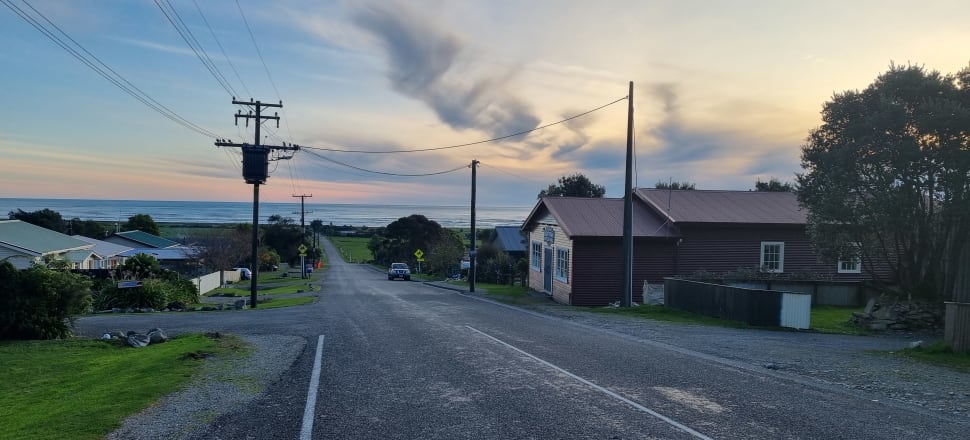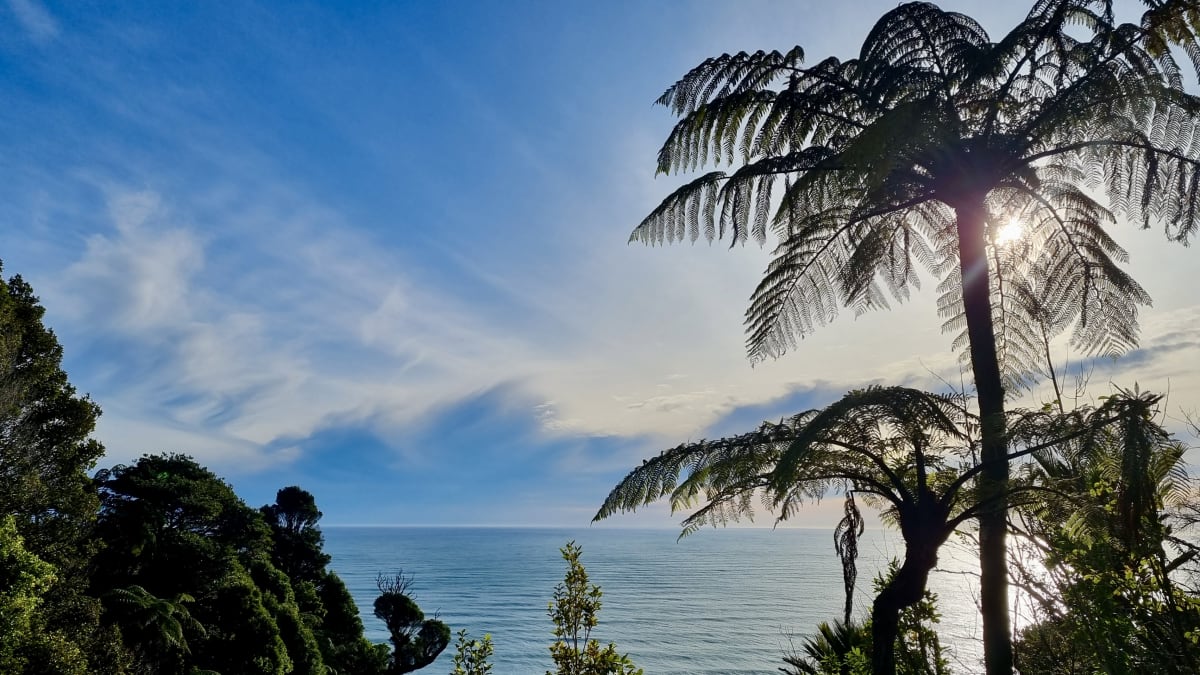
TiGa Minerals and Metals downplays community concerns about road hazards and environmental risks from a proposed West Coast sand-mining operation
The Australian-based company hoping to mine the West Coast’s Barrytown Flats for rare minerals says it’s not about to rip the guts out of the coastal strip and its trucks will be less of a menace on the world-famous Coast Road than tourists in campervans.
Barrytown residents and other locals opposed to the sand-mining proposal by TiGa Minerals and Metals have rallied to fight it and raised $20,000 for the cause.
Their newly formed Barrytown Resilience Group says 80 percent of people living up and down the road are against the project.
“Turning an area of great beauty … into an industrial zone and trucking route beggars belief,” spokeperson Katherine Crick told Newsroom last month
“This isn’t some outback mining route in Australia. It’s a windy narrow scenic route rated one of the top 10 coastal drives in the world.”
TiGa managing director Robert Brand says the company has met the group and thinks it is overstating the impact of the venture, particularly on road safety.
“The reality is we’re talking about three trucks an hour and they’re not huge trucks – they’re about a quarter of the size of the milk tankers that use that road.
“They won’t add significantly to the volume of traffic.”
The company plans to employ local drivers who know the road, Brand says, including the blind corners that locals fear will become death traps for tourists, especially cyclists.
“They won’t be tied to strict deadlines and if they need to delay or slow a trip to keep people safe they can do that.
“I would submit that these drivers will be a darned sight safer for other road users than cyclists gazing round at the views or tourists in campervans driving the coast road for the first time,” Brand says.
Brand won’t reveal which way the ore trucks will run.
All roads lead south
TiGa is still negotiating for the services it would need for a processing plant at either Westport or Greymouth he says.
But all the signs are pointing south to Greymouth.
“The products of the mine will have to go elsewhere on the coast to be evaluated and separated and graded and if we’re going to be exporting significant quantities overseas we need to be close to rail and a container port.”
Westport would involve the use of barges and doesn’t have container facilities, he says.
“Greymouth would make obvious sense. Logic dictates the most likely route to market would be to upgrade there to a finished state then rail it to the east coast to join the bulk container traffic at Lyttelton.
“We’d be exporting 5000 containers a year.”
The processing plant would add significant value to the project, along with another 50 jobs, and a final decision is not far off, Brand says.

Trucking the ore to Greymouth would avoid blind corners north of Barrytown.
And the trucks would not have to pass through the at-times congested tourist magnet of Punakaiki.
But the Barrytown mine opponents aren’t impressed.
“There are plenty of dangerous bends south of the mine site and there are all the other concerns about the water table and how the mining could affect the taiko colony,” Crick says.
The group has appealed to the government to call in the TiGa application, bypassing the West Coast Regional Council in the consent decision.
The council is biased towards industry and economic development, the group says, citing its oversight of the new West Coast district plan, which changed the zoning of the Barrytown Flats from “rural activity” to “mineral extraction”.
Council chair Peter Haddock doesn’t accept that.
“Our staff are dealing with this,” he says, “not the councillors. There’s a process to follow and they are professional and competent enough to follow it.”
Independent commissioners will decide on the resource consents and their rejection of an initial Barrytown Flats mining application shows such proposals stand or fall on their merits.
Process explained
Brand, an industry veteran from Perth, is also keen to allay fears about the sand-mining process.
Extracting minerals like ilmenite, garnet and zircon from the earth involves digging deep pits and using water to wash down the ore body and pump it as a slurry to an on-site concentrator plant.
The Barrytown mine opponents fear the process will alter the water table beneath the low-lying flats, damage nearby springs, wetland and coastal lagoons, lower the ground level and put the flats at risk of salt incursion and sea inundation.
The process is relatively untried in Aotearoa New Zealand and a previous bid for resource consent to mine the area was declined because the effects could not reliably be predicted, the mine opponents say.
But TiGA says its reworked proposal covers all those concerns with a comprehensive water-management system developed after a year of testing and monitoring the hydrology of the mine site.

Brand says companies he’s previously headed, including Barton and GMA Garnet, have long experience in mineral sand-mining.
“That’s been my career over many years. It’s always coastal, obviously, but in some places we have to sink wells for the water we need; in others like Barrytown there are swampy conditions and two of our people are very experienced in that.”
If it gains consent, TiGa will work its way over 63ha of farmland in 100m by 300m strips, backfilling the pits, recontouring and reseeding the land as it goes.
Within two years each 5ha strip will be returned to pasture, Brand says.
“We’re very conscious of the fears and feelings of the locals. Our next step is to set up a community working group in the near future so we can keep everyone informed and deal with any concerns that might arise.”
Crick says she and other mine opponents are prepared to join.
“It doesn’t mean we accept what they’re doing or want to do but at least we can keep an eye on them,” she says.
The company has asked the West Coast Regional and Grey District councils to publicly notify its Barrytown proposal and expects that to happen within the month.
It’s contemplating a public float to raise capital for the project,Brand says.
“It’s the usual process for a mining venture. We put in the risk capital ourselves, enough to satisfy a lender, and then it’s a combination of equity funding and debt. We’ll need to spend US$80 million all up.”
Although TiGa’s mining permit covers 800ha of the Barrytown Flats, not all of it can be mined, Brand says.
“About 30 percent is Department of Conservation reserve and in other parts the minerals run very deep and tend to run out as you get closer to the highway, so parts are not economic and in parts there’s a risk of subsidence.
“In that 800ha there’s a big strip right up the coast that we can’t mine. So this fear that some people have that we’re going to rip the guts out of Barrytown is totally wrong – it’s just not a physical reality.”
Made with the support of the Public Interest Journalism Fund








